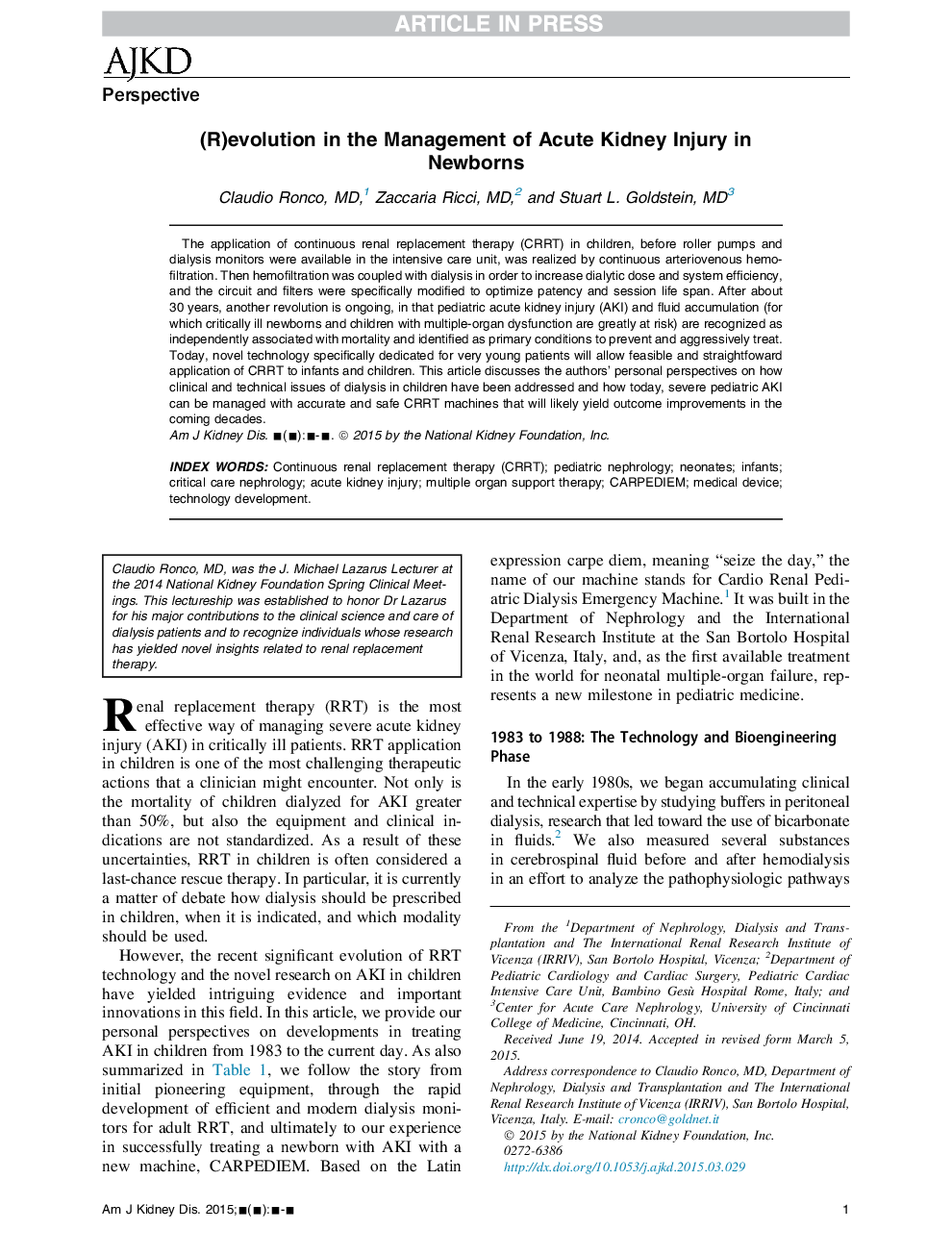| Article ID | Journal | Published Year | Pages | File Type |
|---|---|---|---|---|
| 6157393 | American Journal of Kidney Diseases | 2015 | 6 Pages |
Abstract
The application of continuous renal replacement therapy (CRRT) in children, before roller pumps and dialysis monitors were available in the intensive care unit, was realized by continuous arteriovenous hemofiltration. Then hemofiltration was coupled with dialysis in order to increase dialytic dose and system efficiency, and the circuit and filters were specifically modified to optimize patency and session life span. After about 30Â years, another revolution is ongoing, in that pediatric acute kidney injury (AKI) and fluid accumulation (for which critically ill newborns and children with multiple-organ dysfunction are greatly at risk) are recognized as independently associated with mortality and identified as primary conditions to prevent and aggressively treat. Today, novel technology specifically dedicated for very young patients will allow feasible and straightfoward application of CRRT to infants and children. This article discusses the authors' personal perspectives on how clinical and technical issues of dialysis in children have been addressed and how today, severe pediatric AKI can be managed with accurate and safe CRRT machines that will likely yield outcome improvements in the coming decades.
Keywords
Related Topics
Health Sciences
Medicine and Dentistry
Nephrology
Authors
Claudio MD, Zaccaria MD, Stuart L. MD,
